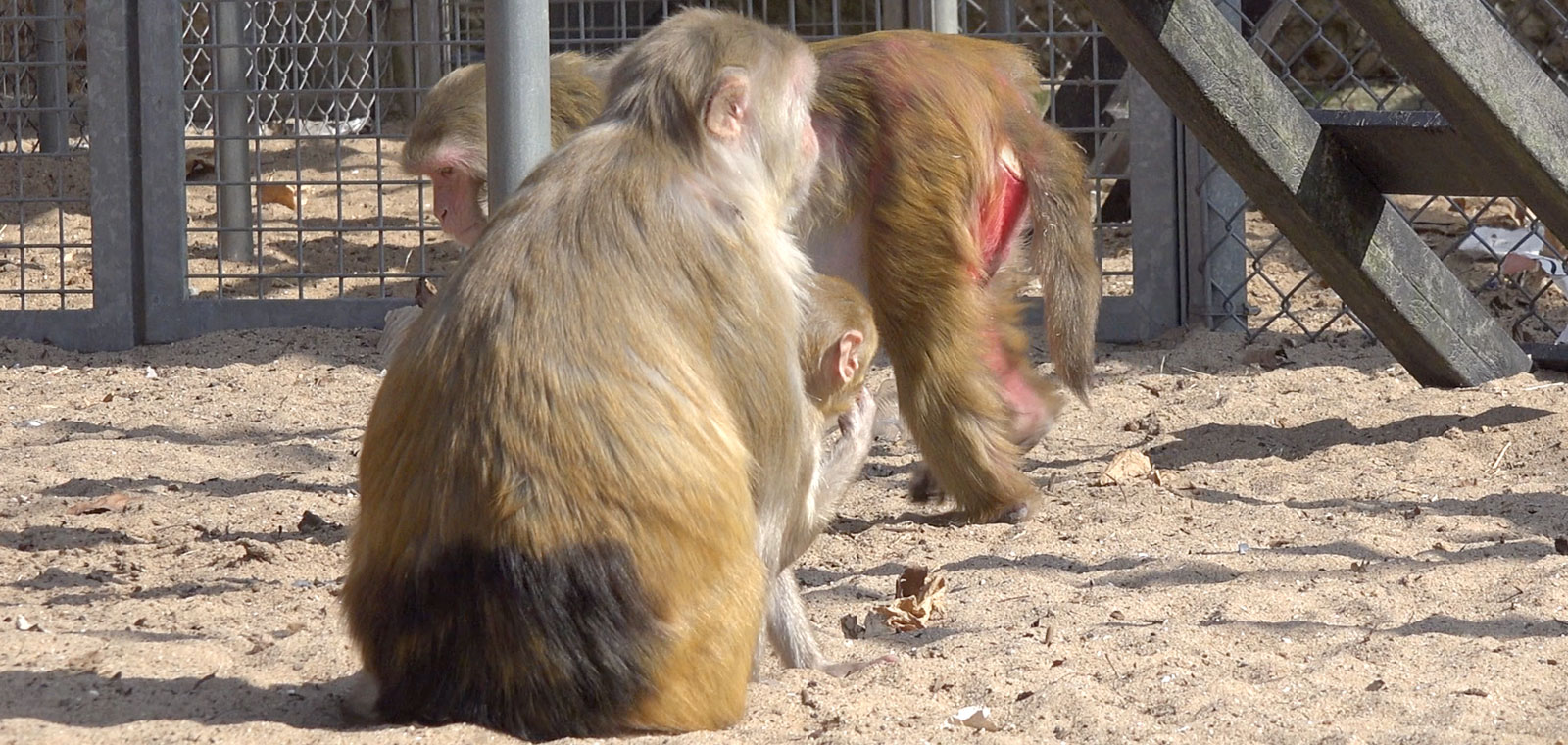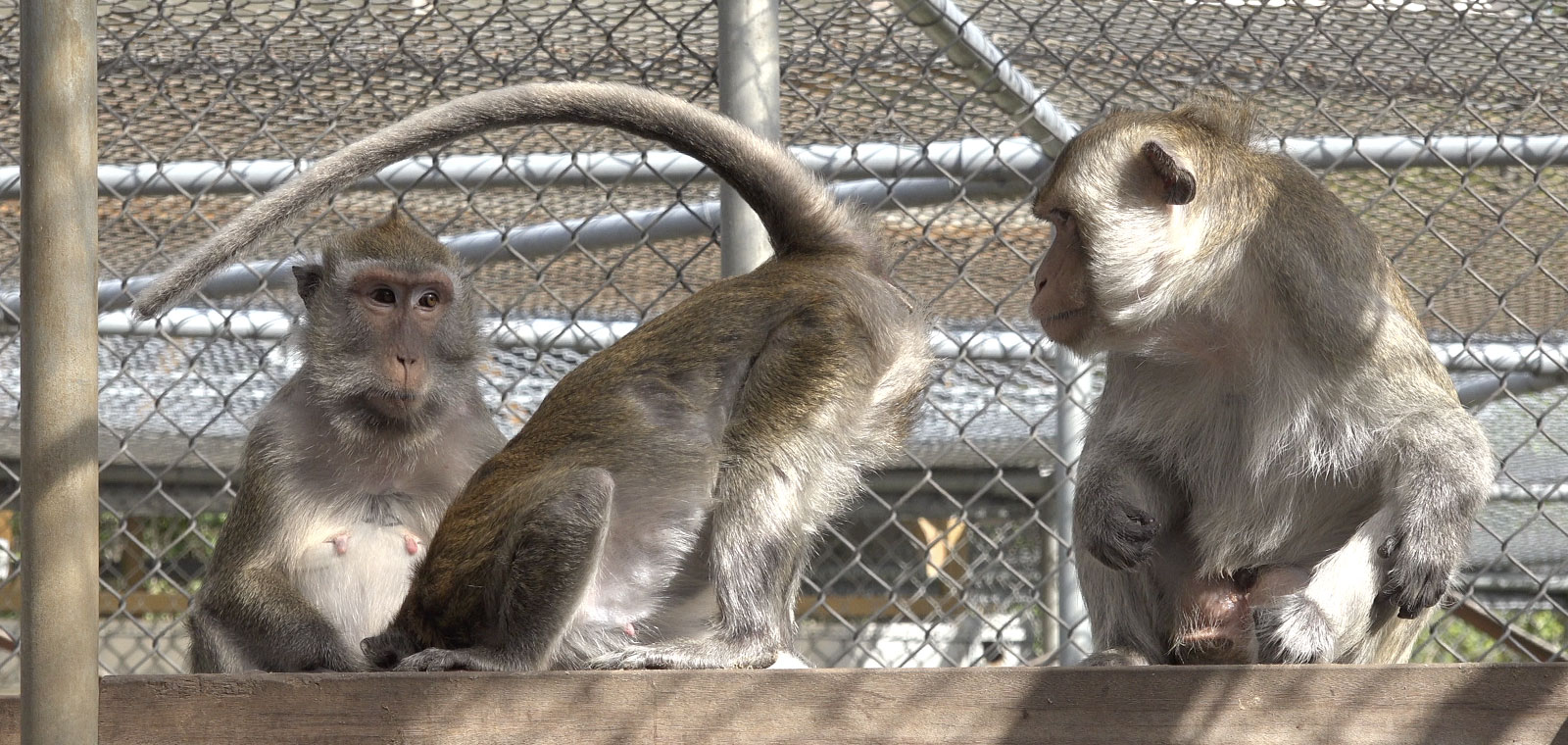
When conducting research with animals, it is important to know as much as possible about these animals. Of course about how their immune system works. But it is also important that we know how the animals behave. How they live in the wild and how they interact. What they like and what they don't like at all. At BPRC we can use this knowledge about the animals to make the research as stress-free as possible and to provide them with optimal housing. But what about those red bottoms?
Someone who knows a lot about animal behaviour is called an ethologist. Professor Liesbeth Sterck of the University of Utrecht is a monkey ethologist and also works at BPRC. Klokhuis of NPO-ZAPP interviewed Liesbeth about the seduction tricks that monkeys use. This was shown in the episode (Dutch) “Versieren bij dieren” (Seducing in animals) on Tuesday January 19.
Make oneselves attractive
In nature usually the males have the most striking colors. Liesbeth said that with some monkey species it is the women who like to dress up. The women get red bottoms. This is clearly visible in macaques and especially baboons. And the more red the bottoms are, the more fertile the woman. The men find this very attractive!
Present
We can't make it more classy than it is. Fertile ladies try to seduce the man even more by properly showing their red buttocks. They proudly show their buttocks to the man. Sometimes close to their faces.

Impress
Another trick is to impress. Gorillas are a good example. They act macho; make themselves broad and pat on their chest. With impressive behaviour, the men show other men that they are the best, that they are the only ones allowed to be with the women. Women then choose such a man because he can best defend her.
Reproduce
The three seduction tricks have only one goal. Getting children.
Want to know more about ethology?
If you want to know more about the ethological studies at BPRC, read more about behavioural science here.

